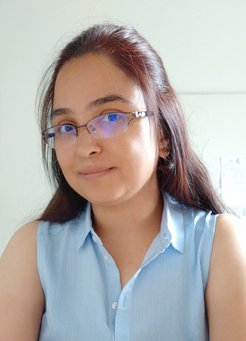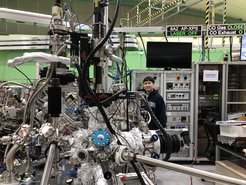FHI heads 2020 Humboldt Ranking and gains new fellows

The Alexander von Humboldt Foundation sponsors international researchers to undertake research in Germany. Every three years, the Foundation publishes the Humboldt Ranking, revealing which German research institutions are most often chosen by scientists who have won fellowships and/or awards. In the 2020 ranking, the Fritz Haber Institute is once again the most chosen non-university research institution with 43 fellows and award winners between 2015 and 2019. It already headed the 2014 and 2017 rankings with respectively 63 and 54 fellows and award winners. The share of female scientists among the fellows and award winners has risen from 11% to 21% since 2014.
Incidentally, the Interface Science Department (ISC) at the Fritz Haber Institute welcomes two new fellows this winter. The department Director Prof. Dr. Beatriz Roldán Cuenya is pleased about both the ranking and the new additions to her team. “It is always a pleasure to welcome international talented Humboldt Postdoctoral Fellows, who have been an integral part of the Fritz Haber Institute for many years. I am especially happy about the growing share of female scientists coming to join us from all over the world. It is a key responsibility of senior scientists like myself to promote gender equality in the sciences, and it is motivating to see the progress made since I was a student. But there is still a long way to go.”

Dr. Aarti Tiwari will join the Interface Science Department. She received a Ph.D. in chemistry from the Indian Institute of Technology Ropar (India) in 2018, having written a thesis on the development of non-noble electrocatalysts to facilitate the cathodic oxygen reduction reaction for applications in alkaline fuel cells. Thereafter, she received the prestigious H. C. Ørsted Marie Curie Cofund postdoctoral fellowship to work at the Technical University of Denmark (Denmark) – an opportunity that allowed her to explore the fundamental question of how copper (the best catalyst for carbon dioxide reduction) behaves under alkaline electrochemical conditions to help close the carbon cycle and contribute towards the goal of a sustainable energy society. During her Humboldt Fellowship, she plans to find out why copper is active towards reducing carbon dioxide for the production of industrially valuable chemicals. “We aim to identify the real active sites on well-defined copper surfaces using the unique state-of-the-art facilities available at FHI, which allow exploration of material composition and structure down to the atomic scale. These exciting scientific capabilities and especially the opportunity to learn from world-renowned excellent researchers is what motivated me to join the Interface Science Department at the FHI. I am excited to work in the group of Dr. Thomas Schmidt with the SMART setup located at the BESSY synchrotron facility and combine our intricate findings with collaborative theoretical expertise already available within the Theory Department at the FHI. This approach will help solve the mystery of why copper is so active towards reducing CO2 and making sustainable energy a reality.”

Dr. Si Woo Lee will also join Prof. Beatriz Roldán Cuenya’s group at the Department of Interface Science, where he will study the promotional effect on bimetallic CuGa catalysts in the CO2 hydrogenation reaction by using a combination of surface science techniques. “To develop an effective catalyst for selective CO2 hydrogenation, our observation of the surface atomic composition and morphology changes on model catalysts will greatly contribute to economical and technical aspects of environmentally friendly chemical processes,” he says. “I chose to come to the ISC-Department at the Fritz Haber Institute of the Max Planck Society because I am convinced that is the most suitable institution to successfully carry out this research. Prof. Roldan’s Department is equipped with a variety of state-of-the art UHV equipment (e.g., NAP-STM and NAP-XPS) and has also frequent access to synchrotron facilities to complement the operando catalyst characterization via X-ray absorption spectroscopy.” Dr. Lee will spend two years at the FHI in Berlin within the group of Dr. Shamil Shaikhutdinov.














